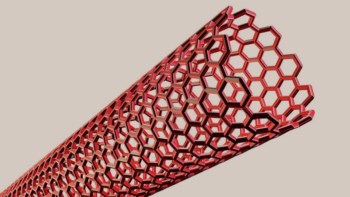
Light-operated molecular machines can be used to rotate objects much bigger than themselves but at larger scales, they stop rotating once they reach the so-called photostationary state. By using a photo-sensitive chiral liquid crystal, it is now possible to generate continuously rotating supramolecular structures fuelled by light. Such soft engines might be used in applications like synthetic muscles, nano- and micro-robots and advanced mechanical motors.
Molecular machines are ubiquitous in nature and have evolved over billions of years to exploit energy from sunlight or complex chemical reactions. For example, the muscles in our bodies are controlled by the coordinated movement of thousands of these machines, which are made up of complicated assemblies of proteins.
Researchers recently succeeded in integrating light-fuelled molecular motors into liquid crystalline films to fabricate soft engines that can be made to rotate when illuminated with light. One example is a chiral molecular motor embedded in a liquid crystalline film that is able to rotate a glass rod much bigger than itself. However, the problem is that the supramolecular rotational motion stops once it reaches the photostationary state – or the state of photochemical equilibrium, explains co-team leader Etienne Brasselet of the University of Bordeaux in France.
Geometrically frustrated liquid crystalline film
Brasselet and Nathalie Katsonis at the University of Twente in The Netherlands have now overcome this problem in a system prepared using the same photoactive chiral molecular motors, “overcrowded alkenes”, as used in previous studies to dope a nematic liquid crystal. The difference in the new work is that the researchers added a passive chiral co-dopant molecule to it. They then confined the resulting helix-based liquid crystal film between two glass slides, each of which forces the liquid crystalline molecules to orient perpendicular to the slides.
When the gap of the cell is smaller than the helical pitch of the liquid crystals, the helix is supressed, explain the researchers. “We release this frustration by illuminating the mixture with a UV laser beam that modifies the pitch of the supramolecular helix,” explains Brasselet. “This creates a local defect structure or pattern inside the film that can be observed under a microscope.
“At low light intensity, the structures show a symmetrical pattern with either left or right handedness but when the power of the laser beam is sufficiently increased, a spontaneous symmetry breaking occurs and a new rotating pattern emerges. Indeed, we report continuous rotation for up to 40 hours under steady light illumination.”
Chirality is key
According to the researchers, reporting their work in Nature Nanotechnology doi:10.1038/s41565-017-0059-x, chirality is key to the emergence of rotation in these machines and should be integrated into the design of such molecular motors from the start. “The phenomenon can be thought of as the chiral counterpart to the Belousov-Zhabotinsky (BZ) reaction and our chiral supramolecular structures could be used to develop autonomous molecular systems in the future capable of continuously transforming light into work,” they say.
The BZ reaction, beloved of chemistry students, is one that exists in a non-equilibrium state and in which the concentration of reactants and products continually increases and decreases so that the reaction oscillates between different states.



